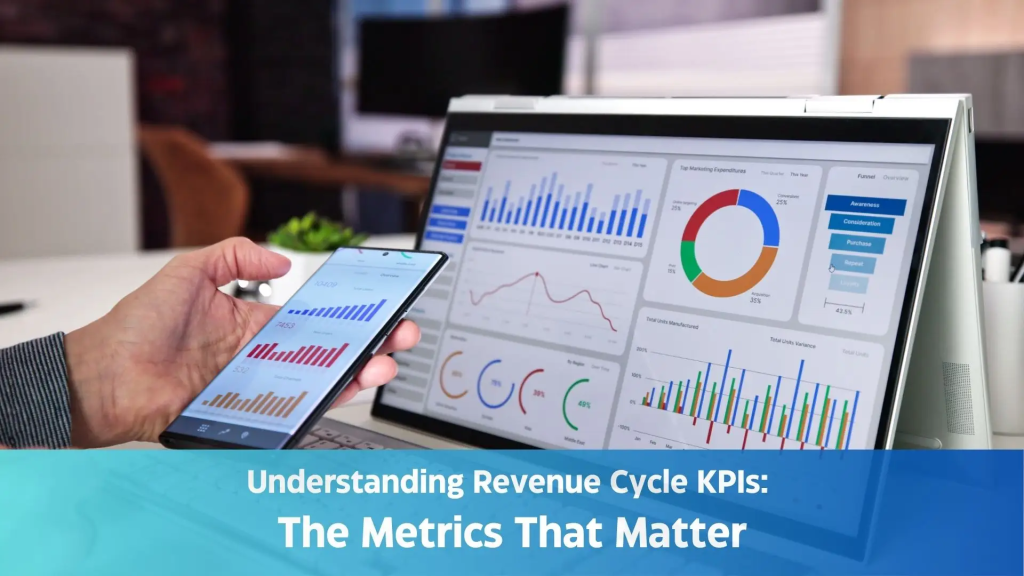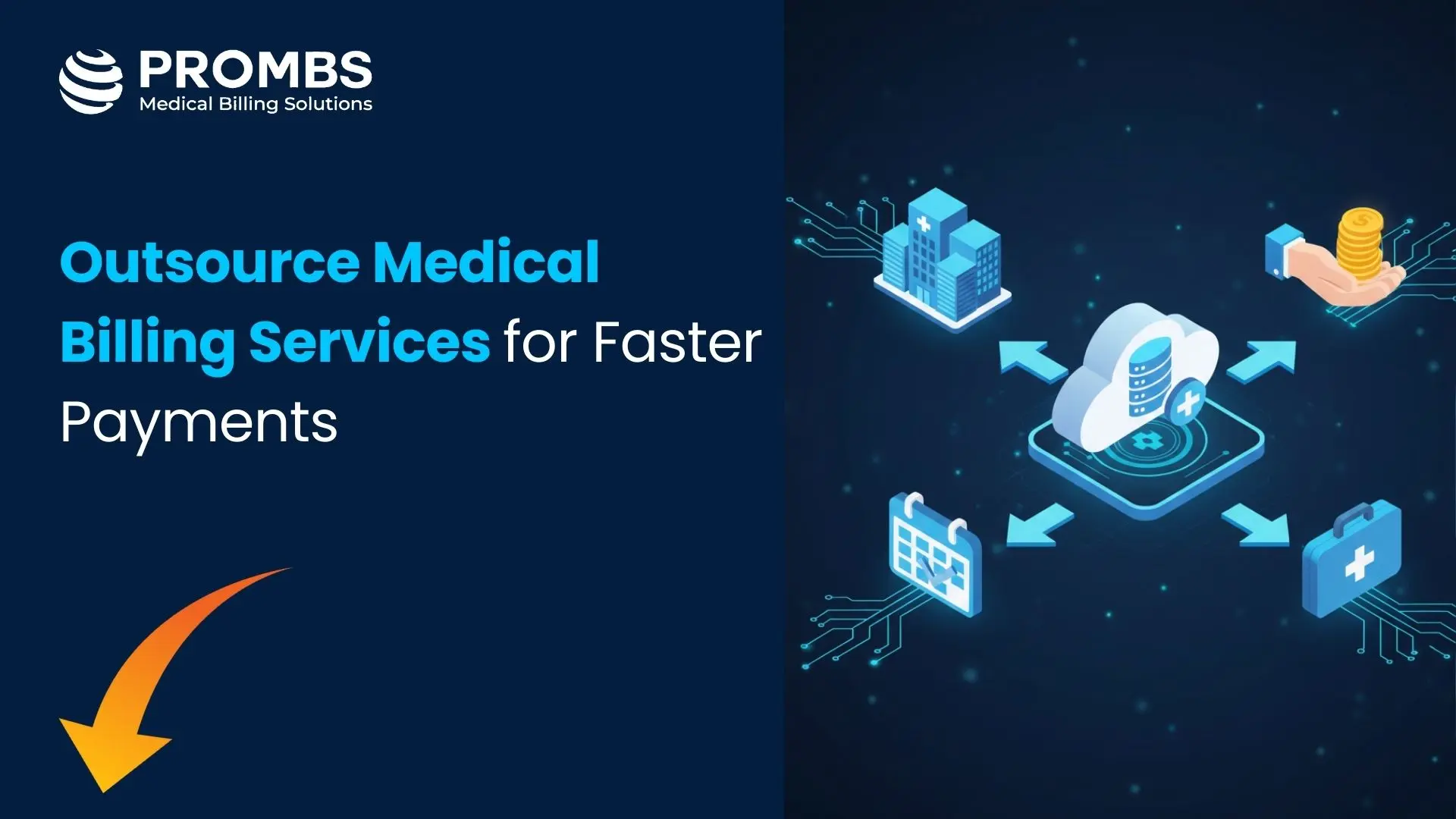Keeping your revenue cycle running smoothly is essential to the financial health of your practice. Delayed payments, denied claims, and billing mistakes can quickly add up and impact your bottom line. To stay ahead, it’s important to track how well each part of your billing process is performing.
These measurable indicators give you a clear picture of how well your billing and collection processes are functioning. But not all metrics carry the same weight. By focusing on the most impactful revenue cycle key performance indicators, healthcare practices can make smarter decisions, prevent costly errors, and ultimately increase profitability. Let’s explore the KPI metrics for medical billing that truly make a difference and how they can drive better outcomes for your practice.
Why Revenue Cycle KPIs Matter
Every claim, payment, or denial reflects something deeper within your financial system. Revenue cycle KPIs help uncover those patterns and show where improvements are needed.
These indicators do more than report what’s happening; they help explain why it’s happening. That makes them a valuable tool for identifying inefficiencies and taking corrective action.
By consistently tracking these performance indicators, you gain insights that support tighter workflows, better accuracy, and improved revenue capture. These metrics also provide a reliable foundation for long-term growth and financial stability.
At Professional medical billing Solution, we’ve seen that practices using KPIs effectively are better prepared to manage challenges like payer delays, claim rejections, and growing patient responsibility. When used with intention, these KPIs become a clear strategy for success, not just a set of numbers.
Top Revenue Cycle KPIs Every Practice Should Track
1. Days in Accounts Receivable (A/R)
This is one of the most critical KPI metrics for medical billing. Days in Accounts Receivable ( A/R) measures how long it takes to collect payments after a service is provided. Ideally, you want to keep this number below 40 days.
Why it matters: A high number indicates delays in reimbursement, which can hurt your cash flow.
What to do: Audit slow-paying payers, improve claim submission accuracy, and follow up consistently. Our medical billing services are designed to help reduce A/R days and improve collections.
2. Clean Claim Rate (CCR)
This KPI shows the percentage of claims submitted without any errors. A high clean claim rate (above 90%) means fewer denials and faster payments.
Why it matters: The cleaner the claim, the quicker the payment. Errors slow down the process and require rework.
What to do: Invest in training and tools that ensure accurate coding and proper documentation
3. First Pass Resolution Rate (FPRR)
This revenue cycle KPI tracks the percentage of claims paid after the first submission. A high FPRR means your billing is on point and your workflow is efficient.
Why it matters: Reworking denied claims takes time and resources. A high FPRR means more money with less effort.
What to do: Review common denial reasons and fix them before claims are submitted.
4. Denial Rate
The denial rate measures the percentage of claims rejected by payers. The industry benchmark is usually between 5% and 10%.
Why it matters: A high denial rate signals problems in coding, documentation, or eligibility verification.
What to do: Identify the root cause of denials and implement corrective actions quickly. Explore our denial management services for expert help.
5. Net Collection Rate
This KPI looks at the percentage of collectible revenue your practice actually collects. A good benchmark is 95% or higher.
Why it matters: It reflects how effective your revenue cycle team is at capturing all revenue owed.
What to do: Monitor write-offs and adjust your collection strategies to maximize reimbursement.
Secondary Metrics That Strengthen Your KPI Strategy
While the five core KPIs form the backbone of revenue cycle monitoring, several supporting metrics offer deeper insight into where improvements can be made.
a. Patient Collections Rate
As patient financial responsibility continues to rise, tracking what patients actually pay becomes more critical. A healthy patient collections rate helps you manage front-end processes like eligibility checks, upfront collections, and payment plans.
b. Average Reimbursement per Encounter
b. Average Reimbursement per Encounter
c. Charge Lag Days
Turning KPI Data into Action
Set Practical, Custom Goals
Review Your Metrics Consistently
Involve Every Department
Use Technology to Your Advantage
Manual tracking is time-consuming and prone to errors. That’s why partnering with a revenue cycle management provider can make a huge difference. We provide smart tools and expert support that simplify your workflow and enhance your KPI outcomes.
How Prombs Helps You Optimize Revenue Cycle KPIs
At Prombs, we’ve built our services around the principle that what gets measured can be improved. We offer end-to-end RCM solutions designed to help practices monitor, understand, and enhance their revenue cycle key performance indicators.
By working closely with healthcare providers, we help pinpoint underperforming metrics, implement proven billing strategies, and drive long-term financial improvements.
Whether your goal is to lower days in A/R, boost clean claim rate, or strengthen your overall KPI metrics for medical billing, our team is ready to support you every step of the way. .
Conclusion
Your revenue cycle KPIs are more than just a collection of numbers. They directly reflect the financial health of your practice. By understanding and acting on these metrics, you can uncover inefficiencies, reduce delays, and increase collections across the board.
At Prombs, we help turn those insights into results. Our solutions are designed to support real-world performance and help your practice succeed in a constantly evolving healthcare environment.



